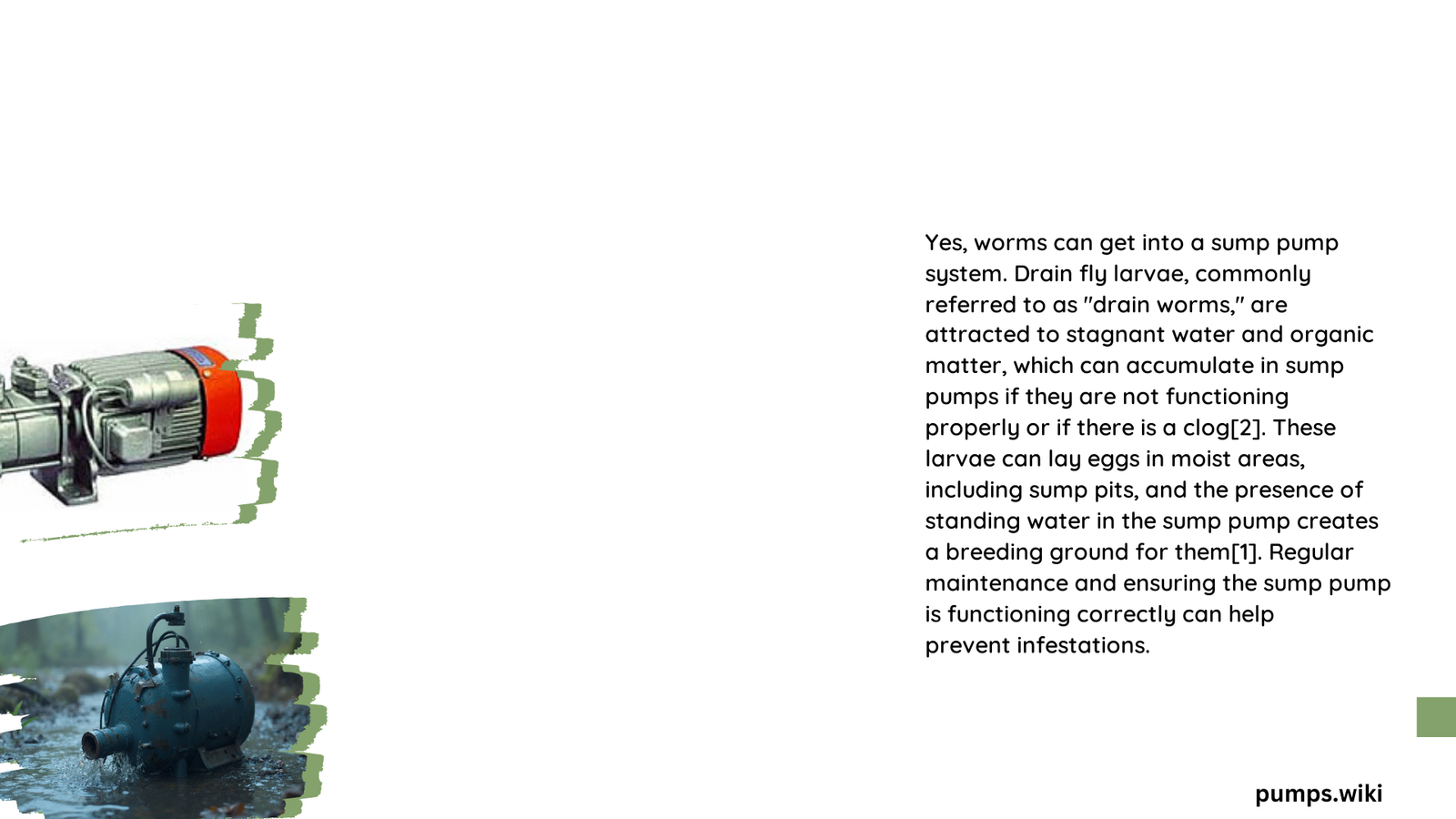Homeowners often wonder about the potential for worms to infiltrate their sump pump system. Understanding the conditions that enable worm entry is crucial for maintaining a clean and functional drainage mechanism. Sump pumps, designed to manage groundwater and prevent basement flooding, can inadvertently provide pathways for small organisms like earthworms under specific environmental conditions.
What Size Openings Allow Worm Entry?
Sump pump systems typically have inlet openings ranging from 32mm to 110mm in diameter. Considering that earthworms measure approximately 1-10 cm in length and 0.5-1.5 cm in width, these openings can potentially serve as entry points for these subterranean creatures.
Factors Influencing Worm Infiltration
| Factor | Risk Level | Description |
|---|---|---|
| Inlet Opening Size | High | Larger openings increase worm entry probability |
| Water Stagnation | Medium | Prolonged water accumulation attracts worms |
| Sediment Buildup | High | Organic debris creates hospitable environments |
How Do Worms Navigate into Sump Pump Systems?

Worms can enter sump pump systems through multiple mechanisms:
- Direct Entry Points
- Unscreened drainage pipes
- Gaps around pump installation
-
Unsealed basement floor connections
-
Environmental Triggers
- High moisture levels
- Organic matter accumulation
- Consistent ground humidity
What Preventive Measures Stop Worm Invasion?
Screen and Filter Installation
Implementing robust prevention strategies involves:
- Installing fine-mesh screens (< 1mm openings)
- Regular maintenance checks
- Ensuring proper drainage slope
- Sealing potential entry points
Maintenance Recommendations
Cleaning Frequency
- Quarterly sump pit inspection
- Biannual thorough cleaning
- Remove accumulated sediments
- Check screen integrity
What Are Potential Risks of Worm Infestation?
Worm presence in sump pump systems can lead to:
– Potential pump mechanism obstruction
– Increased organic decomposition
– Potential bacterial growth
– Reduced pump efficiency
Cost-Effective Prevention Strategies
Estimated Prevention Costs:
– Mesh screens: $10 – $50
– Cleaning tools: $20 – $100
– Professional inspection: $100 – $250
Technical Considerations for Worm Prevention
Professional recommendations include:
– Implementing proper drainage gradients
– Using high-quality sump pump installations
– Maintaining consistent water flow
– Minimizing organic matter accumulation
When to Seek Professional Help?
Consider professional intervention if:
– Persistent worm presence
– Significant sediment buildup
– Unusual pump performance
– Complex drainage issues
Practical Implementation Tips
- Conduct regular visual inspections
- Maintain clean drainage systems
- Use appropriate screening technologies
- Monitor water accumulation patterns
Conclusion
Preventing worm entry requires a comprehensive approach combining technical knowledge, regular maintenance, and strategic interventions. By understanding potential entry mechanisms and implementing robust prevention strategies, homeowners can effectively protect their sump pump systems.
References:
– Sump Pump Installation Guide
– Drainage System Maintenance
– Worm Prevention Techniques
